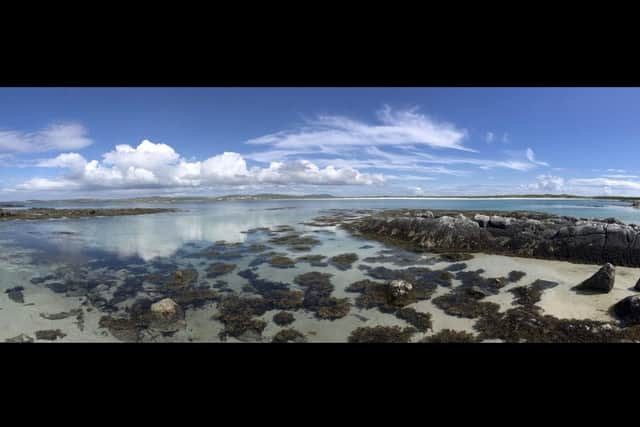From paragliding to wave-riding: 2023's best books about the great outdoors
Writing Landscape, by Linda Cracknell (Saraband) In her 2014 book Doubling Back, Linda Cracknell recounted ten memorable journeys on foot, mostly along ancient paths with stories to tell. Writing Landscape also consists of a series of essays inspired by the natural world, but whereas in the earlier book she was almost always on the move, this time she mostly chooses to focus her attention on a single location, and the essays in Writing Landscape tend to be about in-depth explorations of specific places. This is certainly the case in “Getting Away From It All?”, a wonderfully intense and observant account of a 20-hour period spend on the beach at Udal on North Uist, and there’s a lovely example of micro-landscape writing in “Weaving High Worlds” in which she focuses her powers of description on the tiny, “tangly forests” of moss and lichen growing on the slopes of Sgòr Gaoith in the Cairngorms. At just 138 pages, this may only be a small book, but it will change the way you look at landscape in a big way.
Head in the Clouds, edited by Andrew Craig and High Miller (Cross Country) Subtitled “The Best Stories From 50 Years of Free Flying” this collection of 50 magazine articles about hang gliding and paragliding charts the development of these sports from the early, experimental days of the 1970s to some of the more notable adventures of recent times. The stories range from the sublime to the terrifying: in an article titled “Kilimanjaro, 1978”, Ashley Doubtfire describes an otherworldly flight from the summit of the titular mountain, dodging towering cumulus clouds and unexpected turbulence; later, in “The Croatian Survivor”, Davor Jardas recalls getting sucked into a thunder cloud and nearly freezing to death.
Advertisement
Hide AdAdvertisement
Hide AdThe Bone Cave, by Dougie Strang (Birlinn) Although it's billed in a relatively straightforward way by the publishers – “a vivid account of a journey through the Scottish Highlands, The Bone Cave follows a series of folktales and myths to the places in which they’re set” – Dougie Strang is actually attempting something really intriguing and quite subversive with this book. By drawing on the rich heritage of the Scottish folk tradition he shows us an alternative version of Scotland – one in which stories don’t just exist in the abstract, but are firmly tethered to the landscape, and where people feel bound much more closely to the land as a result. Of particular interest to him is the Cailleach, the mystical “old woman of storms.” His ultimate wish, he says, is to see continued land reform in Scotland result in “a land restored and re-storied.”


Surfing Scotland, by Malcolm Findlay and Andy Bennetts (Self-published) Even though people have been surfing in Scotland since the 1960s, this is the first attempt at writing a history of the sport in this country, and veteran waveriders Malcolm Findlay and Andy Bennetts have done an impressively comprehensive job. In three brief introductory chapters on Scotland’s surf geography, climate and history they set up their central thesis: that Scottish surfers “stand apart... from an increasingly homogenised global surf culture.” They then launch into the meat of their story, which is largely one of coalescence: how small groups of surfers in Aberdeen, Edinburgh and Fraserburgh gradually became aware of each other, and a Scotland-wide surfing community began to take shape, eventually forming official surfing organisations and hosting competitions.
Wild History, by James Crawford (Birlinn) Having spent time working in the archive of the Royal Commission on the Ancient and Historical Monuments of Scotland, James Crawford became aware that much of the landscape that we now consider to be wilderness in fact bears evidence of previous human use. Of the innumerable traces of human intervention still present in the landscape, he realised, only relatively few are still on our collective radar, while many others exist in a state of “continually fading obscurity” – and it’s these places that he sets out to explore here, in a total of 55 walks and bike journeys. Among the highlights are his visits to the remains of a Roman signal station on Rubers Law in the Borders and to the site of a Viking boat burial at Swordle Bay on the Ardnamurchan peninsula. Crawford does an engaging job of explaining how all these sites fit into the great sweep of history, while at the same time demonstrating a good eye for the telling minor details that bring history to life.
